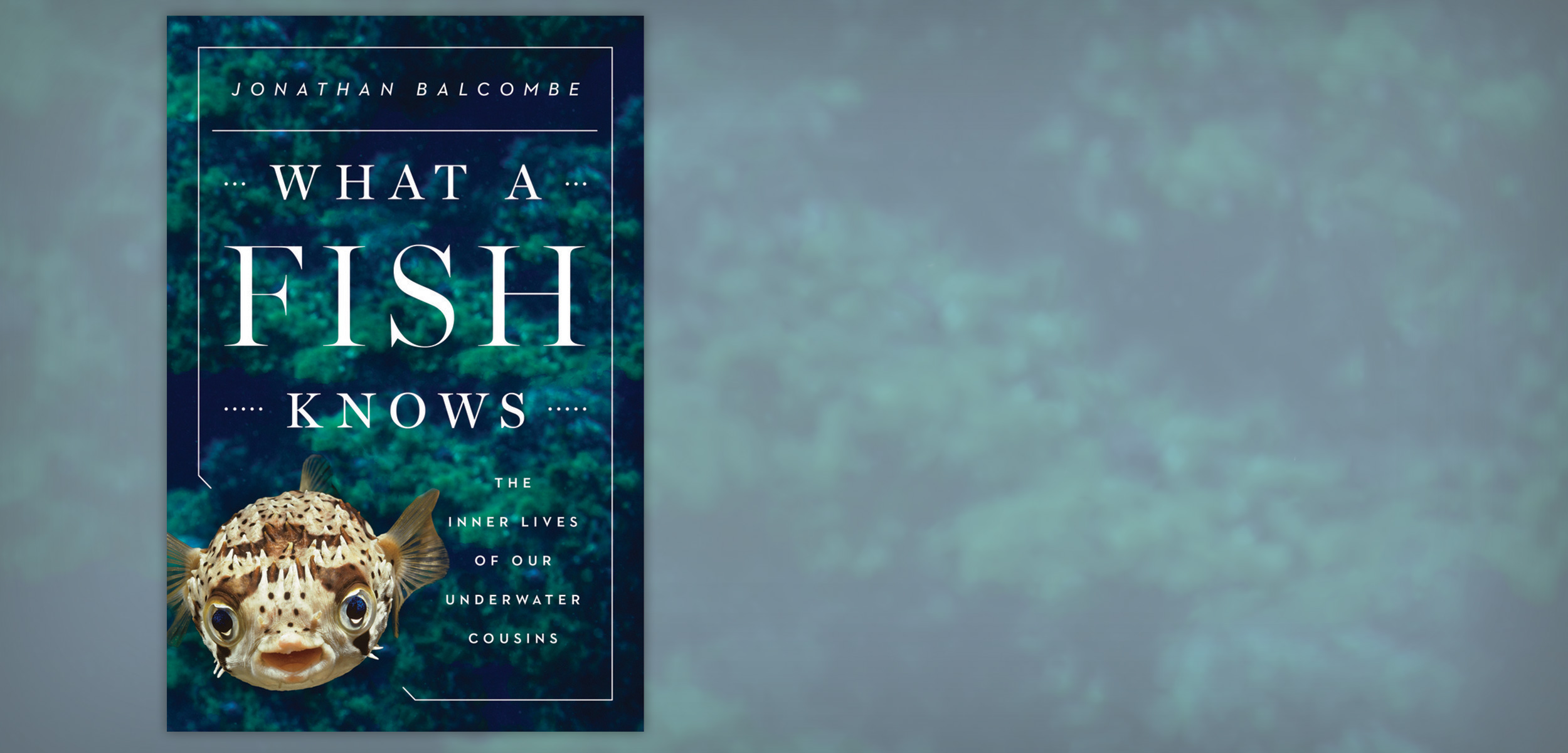Book Review: What a Fish Knows
From using tools to faking orgasms, fish can do more than most people realize.
Article body copy
Ask a layperson to recite one fact about fish intelligence and you might hear the old saw about the goldfish’s three-second memory. But as the ethologist and author Jonathan Balcombe explains in What a Fish Knows: The Inner Lives of Our Underwater Cousins—a delightful exploration of fish cognition, emotion, and perception—that persistent myth obscures the breathtaking capacities of our finned brethren. Tuskfish use tools, lionfish cooperate, and guppies obey social hierarchies. Frillfin gobies form complex mental maps of tide pools. Bass recognize human faces. Brown trout fake orgasms.
Fish—with their rigid countenances, lack of grasping appendages, and inability to vocalize out of water—are easy creatures to underestimate. But Balcombe marshals an impressive body of evidence on behalf of their faculties. One enthralling chapter deals with cleanerfish, which boldly nip parasites from the mouths and gills of their “clients,” including predators such as sharks. Though it’s easy to dismiss this symbiosis as evolutionary instinct, Balcombe reveals that it’s closer to a learned cultural contract: cleanerfish can recognize more than 100 individual clients, are capable of remembering when they last groomed each one, and appease irritable customers with tender massages. “[T]he system encompasses long-term relationships built on trust, crime and punishment, choosiness, audience awareness, reputation, and brown-nosing,” Balcombe writes—not bad for reef dwellers that don’t exceed 15 centimeters.
To some cynical readers, the notion that, say, mullet leap from the water for sheer pleasure may smack of anthropomorphism—the practice of ascribing human attributes and attitudes, like joy, to non-human beings. Perhaps the greater sin, however, is what the primatologist Frans de Waal has called anthropodenial, or “build[ing] a brick wall to separate humans from the rest of the animal kingdom.” By denying that fish learn, innovate, and emote, Balcombe argues, we rationalize their exploitation and mistreatment. As for the old debate about whether fish experience pain, well, it isn’t a debate at all—despite their lack of neocortex, the evidence that they can suffer is overwhelming.
“The simple possibility is that fishes are individual beings whose lives have intrinsic value,” Balcombe writes. “The profound implication is that this would qualify them for inclusion in our circle of moral concern.” Although activists have expressed plenty of justifiable outrage about factory farming of pigs and cows, you don’t hear too many complaints about the anguish that fish experience when they’re bled out through the gills or suffocated on the deck of a boat.
Balcombe stops just short of following this argument to its logical conclusion—that commercial and recreational fishing are unconscionably inhumane. And, truthfully, I’m not sure that they are: every form of food production incurs ethical and environmental costs, and what is fishing but another predator-prey relationship? Still, What a Fish Knows, which is dedicated to “the anonymous trillions,” certainly left this piscivorous angler queasy about picking up his rod. There are other ways of interacting with these marvelous animals, such as “when a grouper fish approaches a trusted diver to receive caresses.” If groupers play, morays plan, and wrasse learn, perhaps we should treat our aquatic kin with a bit more respect.
What a Fish Knows: The Inner Lives of Our Underwater Cousins
By Jonathan Balcombe
287 pp. Scientific American/Farrar, Straus, and Giroux

